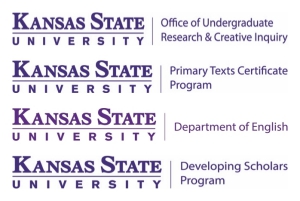Student Major/Year in School
Journalism, third year
Faculty Mentor Information
Dr. Thomas Hallaq, A.Q. Miller School of Journalism and Mass Communications, College of Arts and Sciences
Abstract
Measuring College Student and Faculty Media Literacy
Monica Diaz, Dr. Tom Hallaq, Yeng Xiong
A.Q. Miller School of Journalism and Mass Communications College of Arts and Sciences
Within our society, there is constant progression towards the evolution of media and its platforms. European and Commonwealth countries took fast to training students and educators on media consumption. However, in the United States, it has been a slower process of integration. The focus of study for this research is online digital media literacy amongst college students and faculty. The first step of this study focuses on a review of current literature. The literature review focuses on media literacy levels of university faculty and students. The research focuses on a survey that was administered to both students and faculty that analyzes their online media literacy. The research instrument lists a statement for a response then considers the construct and function which are used to finalize the results. Through using statistical procedures, these numbers are then analyzed to produce results and better comprehend media literacy. The results from this research are crucial because if a lack of media literacy progression is identified then it will support the demand for increased media literacy education. Although this research is primarily focused on media literacy among college students and faculty, it may show a wider scale issue of a gap of media literacy levels between college-aged students and their professors, impacting the communication process in the classroom throughout the country. This research will be presented as a case study of media literacy throughout college students and faculty and show if media’s influence is understood at a higher level.
Creative Commons License

This work is licensed under a Creative Commons Attribution-Noncommercial 4.0 License
Recommended Citation
Diaz, Monica Ann (2019). "Measuring College Student and Faculty Media Literacy," Kansas State University Undergraduate Research Conference. https://newprairiepress.org/ksuugradresearch/2019/posters/24
Measuring College Student and Faculty Media Literacy
Measuring College Student and Faculty Media Literacy
Monica Diaz, Dr. Tom Hallaq, Yeng Xiong
A.Q. Miller School of Journalism and Mass Communications College of Arts and Sciences
Within our society, there is constant progression towards the evolution of media and its platforms. European and Commonwealth countries took fast to training students and educators on media consumption. However, in the United States, it has been a slower process of integration. The focus of study for this research is online digital media literacy amongst college students and faculty. The first step of this study focuses on a review of current literature. The literature review focuses on media literacy levels of university faculty and students. The research focuses on a survey that was administered to both students and faculty that analyzes their online media literacy. The research instrument lists a statement for a response then considers the construct and function which are used to finalize the results. Through using statistical procedures, these numbers are then analyzed to produce results and better comprehend media literacy. The results from this research are crucial because if a lack of media literacy progression is identified then it will support the demand for increased media literacy education. Although this research is primarily focused on media literacy among college students and faculty, it may show a wider scale issue of a gap of media literacy levels between college-aged students and their professors, impacting the communication process in the classroom throughout the country. This research will be presented as a case study of media literacy throughout college students and faculty and show if media’s influence is understood at a higher level.


